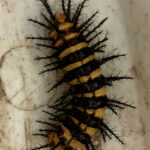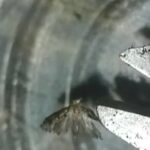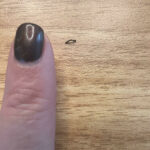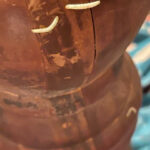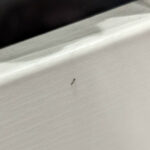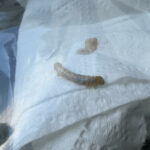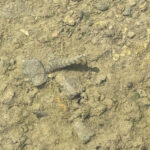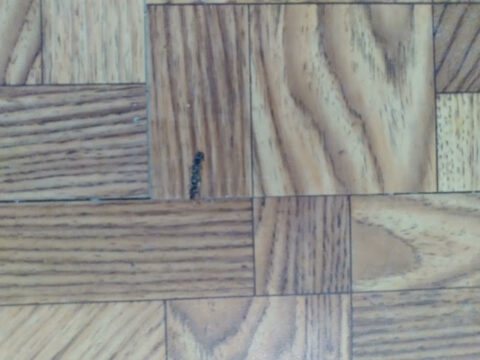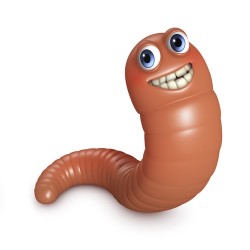
A little while back, a reader wrote to us about a strange, spiky creature he found in his greenhouse. The creature was about four inches (10 centimeters) long, and it had a red head with spikes on it. (It was “spikey,” to use the common misspelling.) The creature also had pincers near its mouth and three pairs of legs on the front portion of its body. The reader only ever refers to what he found as a “creature,” indicating that he doesn’t know what it is (which of course he wants to know), and he also asked if he should be concerned about planting vegetables again in his gardening operation in light of the creature he found. The reader did not send a picture, making a difficult question even harder to answer, but we are all but certain he found some sort of caterpillar. So, the question before us is: what kind of grey caterpillar with a spiky, red head did our reader find, and is harmful to his garden?
First, we think our reader found a caterpillar because every observation he made suggests this conclusion. Caterpillars come in all colors, shapes, and sizes, and they often have a variety of distinctive features (like spiky heads). Caterpillars often have three pairs of true legs on the anterior ends of their bodies (they often have several sets of prolegs too, but these are harder to spot), which is consistent with our reader’s observation. So, nothing in the reader’s description of the creature he found contradicts the caterpillar hypothesis. Moreover, if the creature is not a caterpillar, what else could it possibly be? It’s certainly not a worm (or at least it’s not a worm in the way people normally use the word “worm”), nor does it sound like a millipede or centipede, two other garden dwellers. It also doesn’t sound like any type of larva other than a moth or butterfly larva, and “caterpillar” is just another word for moth or butterfly larva.
But what kind of caterpillar? Unfortunately, this is a question we can’t answer. The reader did send us a decent amount of descriptive information, but without a picture to check our guesses against, we can’t offer any guess at all. And even with a picture, identifying caterpillars is notoriously difficult, as we lament all the time. There are about 175,000 different types of butterflies and moths in the world (to be more precise, there are approximately 175,000 distinct species in the Lepidoptera order), which obviously makes identifying any given caterpillar very hard. We looked through a few different butterfly guides, but we couldn’t find anything that directly matched the description supplied by our reader. To further complicate matters, we don’t know where our reader lives, so we couldn’t even narrow our search by location either.
Naturally, this makes it impossible for us to say if our reader should be concerned about planting vegetables in his greenhouse. Our immediate intuition is that the mere fact that our reader found a caterpillar (especially just one) should not derail his entire gardening operation, but, alas, it is true that caterpillars can cause considerable damage to plants, so we can’t really call our intuition “advice.”
Indeed, the only advice we can offer our reader is that he should look through as many caterpillar guides as he can find. We’ve had some success using the Discover Life Guide, and if you search around a bit, you’ll find several online pictorial guides, some of which are on university websites (and so are presumably reliable). Our reader is the only one who knows exactly what he is looking for, making it easier for him to identify the caterpillar he found should he stumble across it. Hopefully that helps our reader to an extent, and we wish him the best of luck in his quest to identify the grey caterpillar with a red, spiky head that he found.
All About Worms is always free, always reader-supported. Your tips via CashApp, Venmo, or Paypal are appreciated! Receipts will come from ISIPP Publishing.



